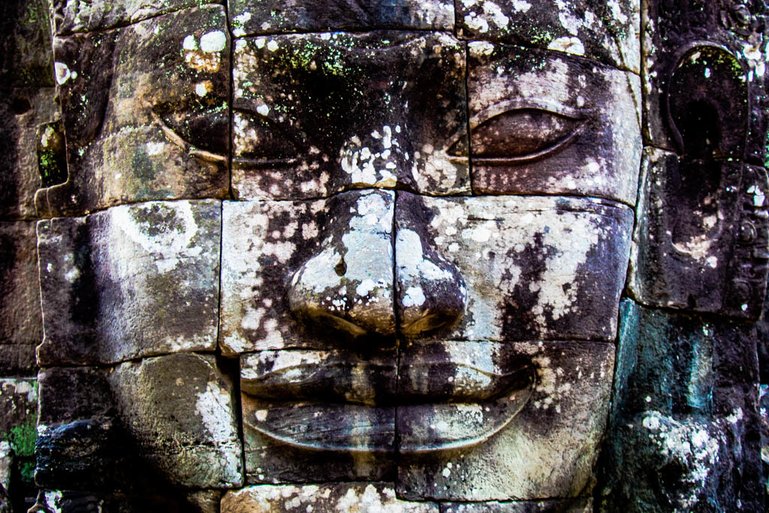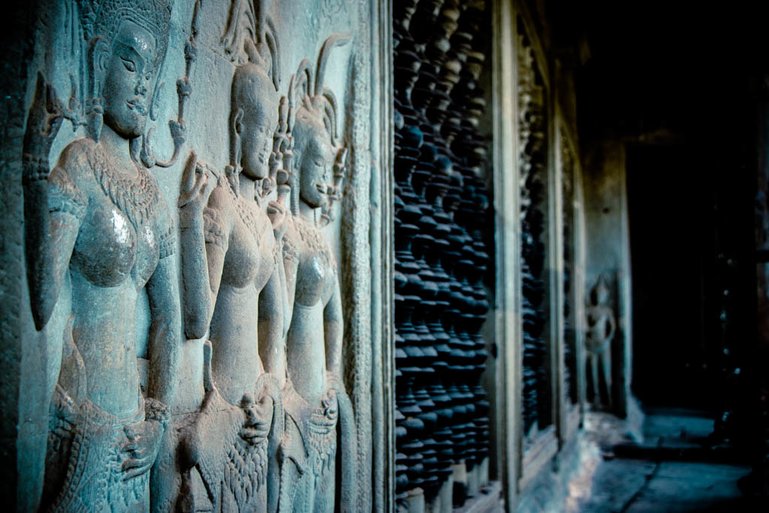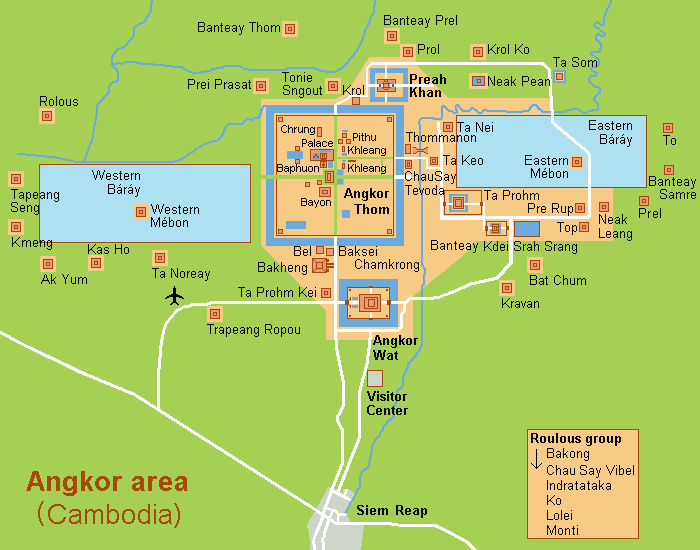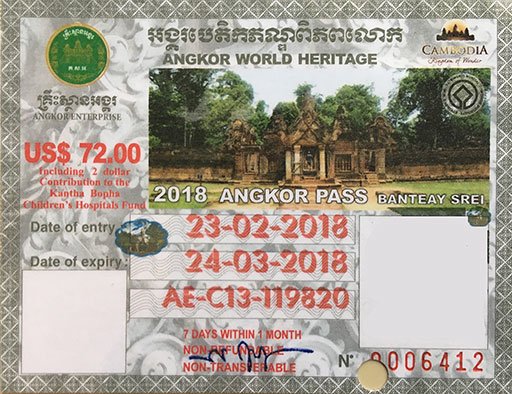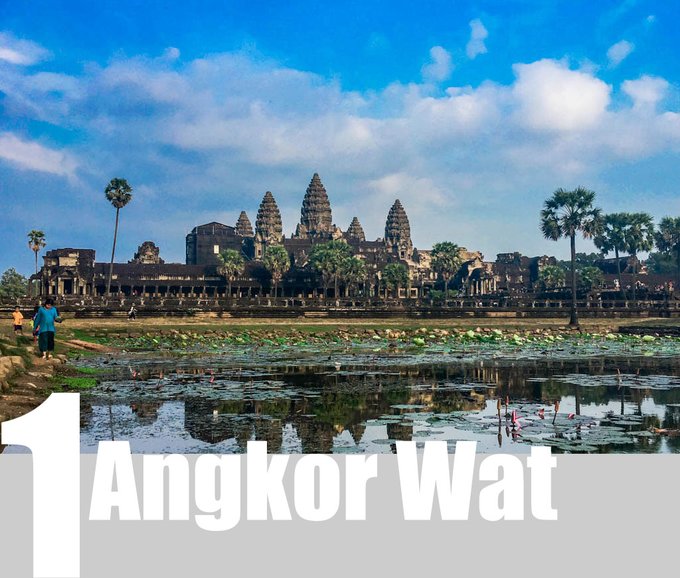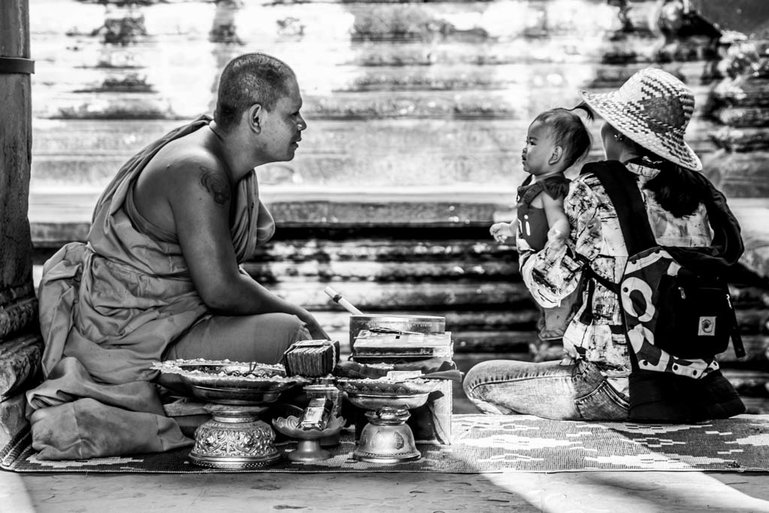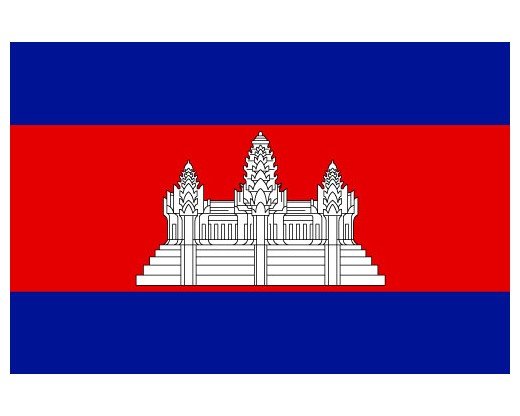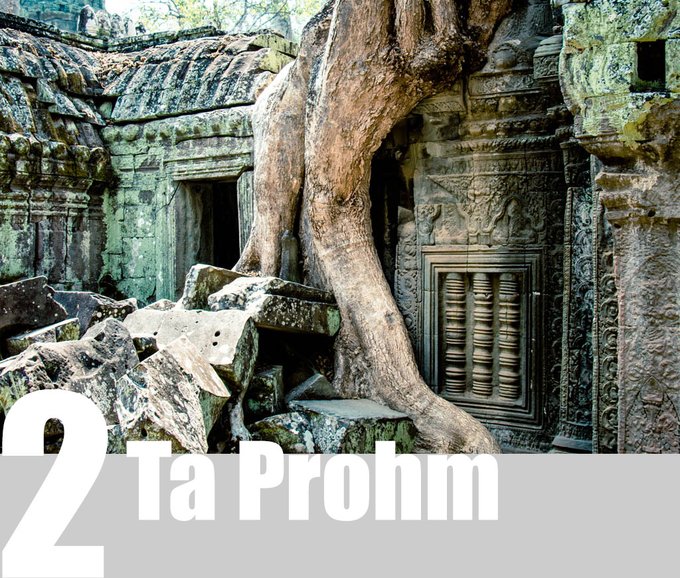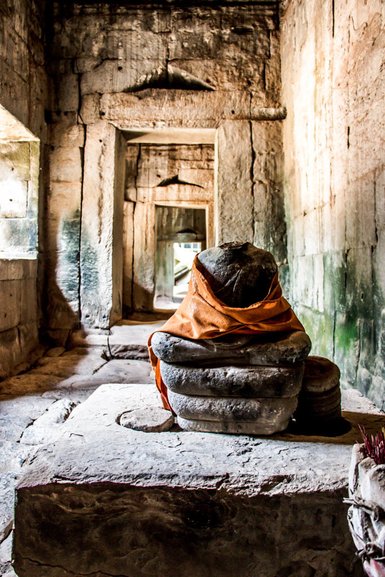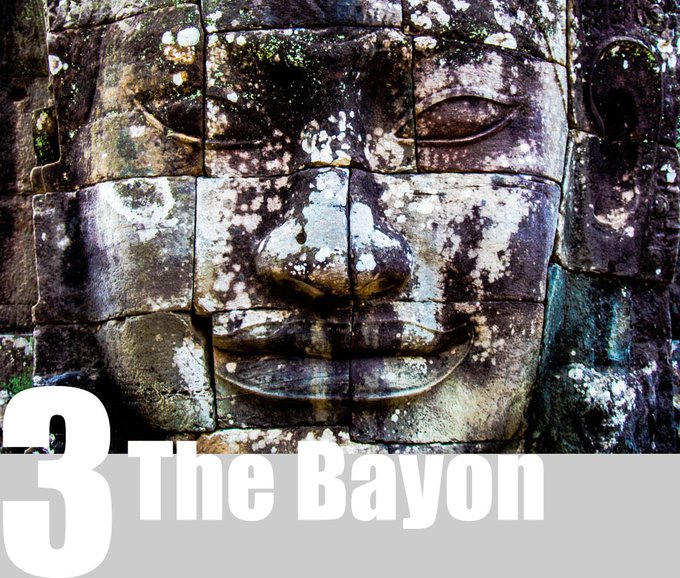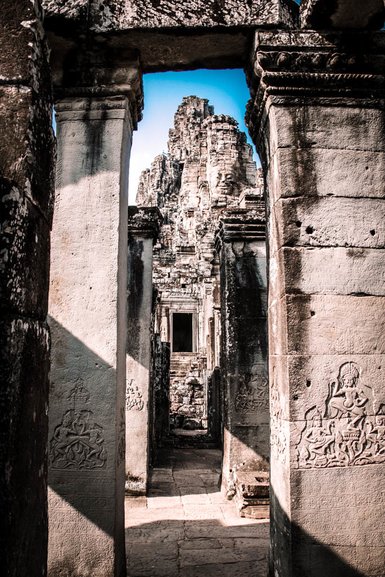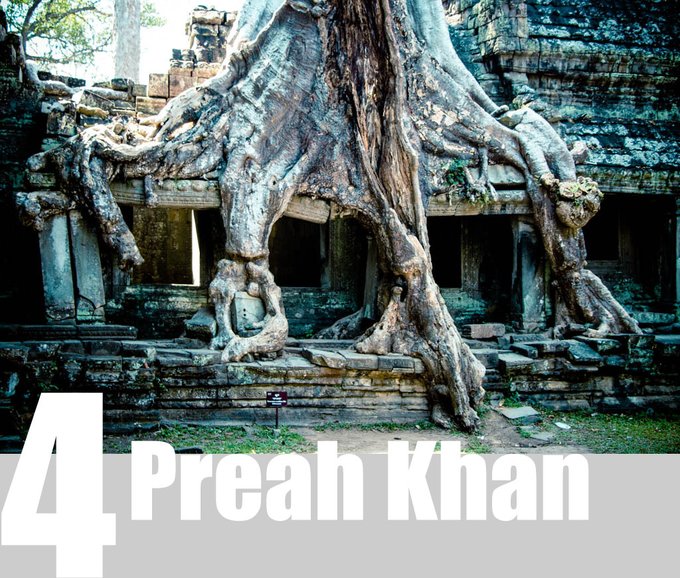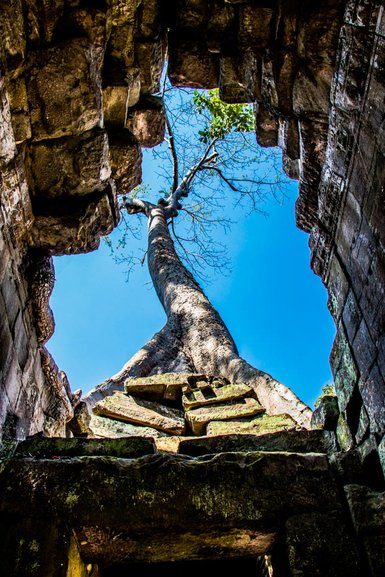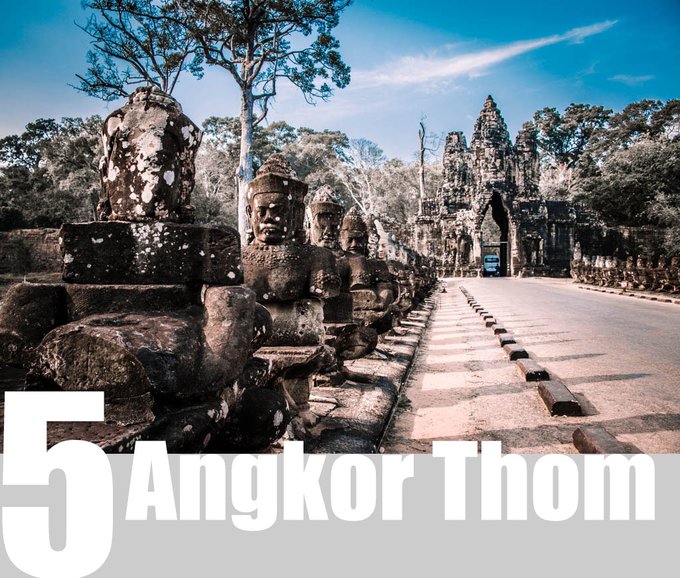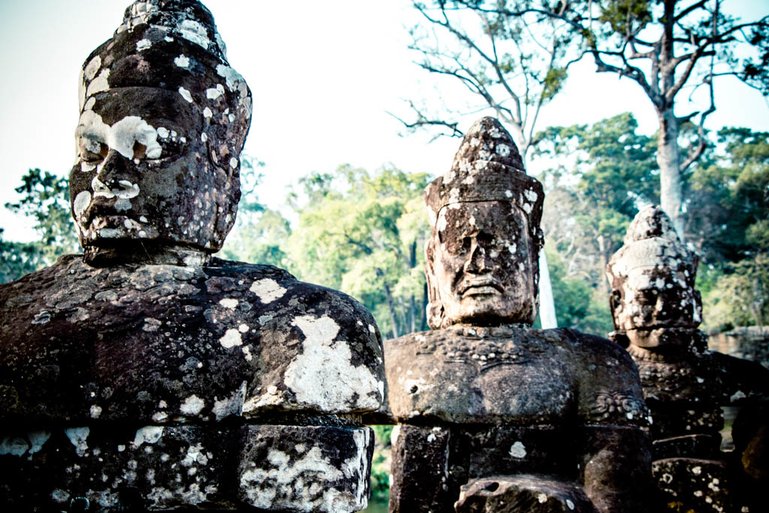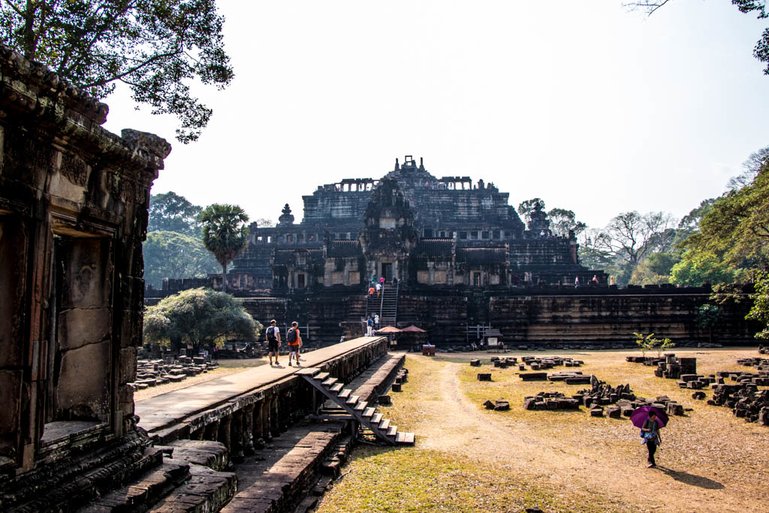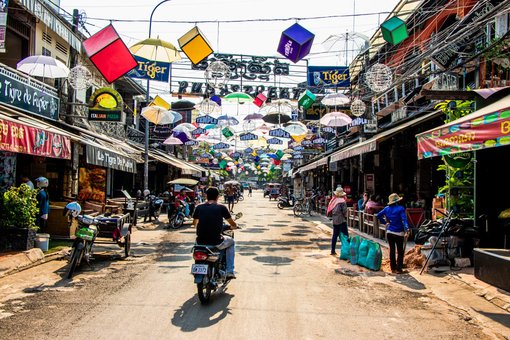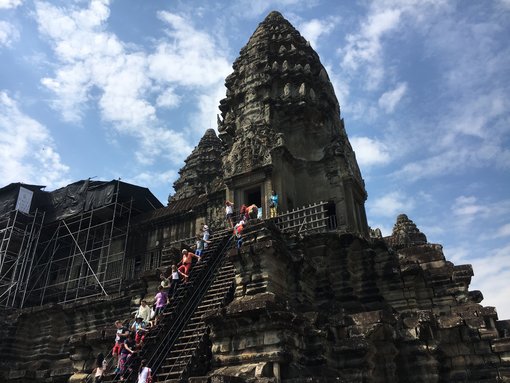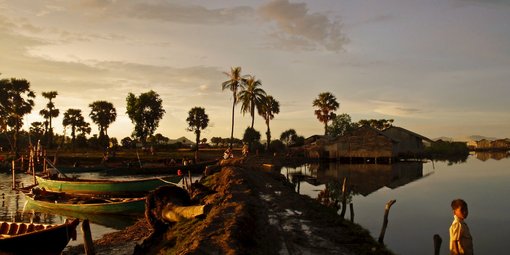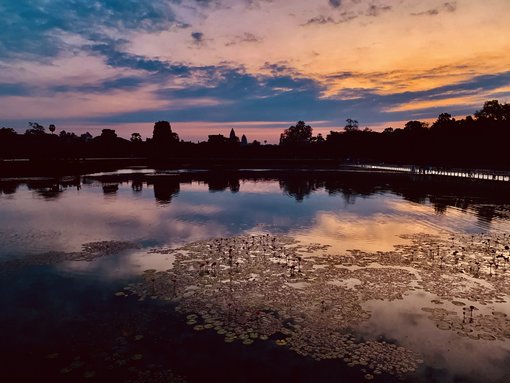The Essential Temples Of Angkor
I first visited the Temples of Angkor back in 2002 during my 3-month travels around Asia. I hadn’t witnessed anything quite on the scale of this sprawling ancient complex before, I became enchanted by these jungle infested ruins. Now, almost 20 years later, it was my chance to rediscover the temples of Angkor on my trip to Siem Reap. A chance to revisit this wonder of the ancient world which surely has to be on any travellers “things to see before you die” list.
History of Angkor
For several centuries Angkor was the capital city of the mighty ancient Khmer civilisation, a Hindu-Buddhist empire which once ruled over most of mainland Southeast Asia. But the empire ended with the fall of Angkor in the early 15th century. It’s thought that intense monsoon rains and a prolonged drought caused widespread damage to the city’s infrastructure, leading to its collapse. Centuries of neglect followed.
Never forgotten by the local Khmer, Angkor became known to the western world first after being ‘rediscovered’ by Portugal’s António da Madalena in 1586, and then by French explorer Henri Mouhout in 1860 who described the site as “Grander than anything left to us by Greece or Rome”. It remained cloaked by the forest until the end of the 19th century after which a lengthy restoration process began.
Today Angkor, in modern day Cambodia, is one of the most important archaeological sites in the world. The Angkor Archaeological Park stretches out over 400 square kilometres and has more than a thousand temples (albeit some are just piles of brick scattered through rice fields). In 1992 it was declared a UNESCO World Heritage Site.
How To Get There
Angkor Wat, the most well known of all the temples, is around 20 minutes drive north from the centre of Siem Reap. The best way to get there is by tuk-tuk. You can hire a driver from around 20 to 35 USD per day depending on how many and which temples you want to see. Your driver will stay with you all day, picking you up from your hotel and dropping you back there at the end of the day.
All the temples in my “essential” list are within a few kilometres of each other and could be seen in one day. Or you could spend a week just at Angkor Wat. It’s up to you.
Angkor Pass
To visit the temples and sites in the Angkor Archaeological Park you have to purchase an ‘Angkor Pass’. You can get one of these at the main entrance on the road to Angkor Wat. Just tell your tuk-tuk driver you need one and he’ll take you there.
Prices are 37 USD for a 1-day, 62 USD for a 3-day, or 72 USD for a 7-day pass. The 3-day pass is valid for 10-days and the 7-day for 1 month. The site is open from 5:00am to 6:00pm daily.
The Essentials List
So here are my top 5 must see temples and sights for any trip to the temples of Angkor.
1. Angkor Wat
The iconic temple of Angkor Wat is the most popular and well known of all the temples. It’s the main attraction for many visitors who come to Cambodia. The largest religious monument in the world, and widely regarded as the eighth wonder of the world, it’s a stunning temple for both its grand scale and incredible detail.
Many people believe Angkor Wat and Angkor are the same thing. They’re not. Yes, Angkor Wat is the largest temple, but it’s just one of the many hundreds of temples and monuments within the vast Angkor temple complex.
Constructed during the 12th century, the temple was originally dedicated to the Hindu god Vishnu. It was later transformed to a Buddhist temple, around the end of the 13th century, when statues of Buddha were added to the temple’s artefacts.
Iconic Lotus-Like Towers
Surrounding Angkor Wat is a 200-metre wide moat that encircles the perimeter of the temple grounds for more than 5 kilometres. Crossing the giant sandstone causeway across the moat from the west leads you through the exterior wall and into the complex.
The temple is immediately recognisable by its 5 iconic lotus-like towers (the tallest central tower stands 65 metres high) and ancient lotus pond in the foreground. It’s here that crowds of tourists gather at sunrise and sunset every day to get the classic picture of this majestic temple reflecting in the water.
Inside the walls of the main temple, there’s a vast complex of vaulted corridors and towered enclosures where you can easily lose a few hours of your time. Nearly 2,000 stone carvings of Apsaras (celestial dancers) and Devata (Hindu deities) adorn the pillars and walls throughout the temple. These bas-reliefs are designed for viewing from left to right in the order of Hindu funereal ritual.
Angkor Wat is no longer an active temple. But Buddhist monks will often visit to meditate, or simply to admire, and learn more about this historical site just like you and I. At the centre of the vast temple complex, there’s a small shrine where people come to pay their respects to Buddha or receive a blessing from a monk. It’s a busy place with tourists parading through. Yet it still retains a spiritual feel with the smell of burning incense. And, as the sun goes down, it’s bathed in light from the setting sun.
Two Million Visitors
The most noticeable difference for me after 16 years was just how busy it was. Today approximately two million people visit every year. In a measure to preserve the site some areas are now off-limits, and wooden staircases have been built over the original stone steps. Back then you were free to wander pretty much anywhere. There was no queue to the upper level… you were free to climb the steep stone steps, without any handrails of the wooden staircase to steady you, which was all part of the experience. The steepness of the steps forced you to lean forward and keep your head down, in respect of the gods.
Nonetheless, despite the crowds, due to the sheer scale of the place, you will sometimes find yourself the sole person roaming a corridor.
A Proud Nation
Angkor Wat is one of the finest monuments in the world. Cambodians are rightly proud of this ancient masterpiece. It has become a symbol of Cambodia, appearing on its national flag since around 1850.
Angkor Wat is located around 1km south of Angkor Thom. Access to the temple is via its west gate.
2. Ta Prohm
My favourite of all the temples at Angkor. Left largely as it was found, the crumbling ruins of Ta Prohm have been swallowed up by the jungle. In the centuries since the Khmer empire fell, roots of banyan trees and strangler figs have entwined themselves around the temple walls and spread across the intricately carved stone. Probably the most visually stunning and atmospheric of all the temples.
The ‘Tomb Raider’ Temple
Known as the ‘Tomb Raider’ temple, Ta Prohm became famous after providing the mystical backdrop in the Angelina Jolie movie ‘Lara Croft: Tomb Raider’ in 2001. When I visited less than a year later the movie was yet to have an impact on its popularity. You could still wander around the ruins in relative seclusion. Today, busloads of tourists flood the site, and people queue for photos amid the tree roots made famous by the movie.
Ta Prohm was built at the end of the 12th century by King Jayavarman VII. It was originally built as a Buddhist monastery and university. Dedicated to the King’s mother, it was home to 12,500 people, including 18 high priests and over 600 female dancers. It was originally known as ‘Rajavihara’ (“Monastery of the King”) before gaining its modern Khmer name ‘Ta Prohm’ meaning “Old Brahma”.
Merged With The Jungle
The early French archaeologists decided that Ta Prohm would be left largely as it had been found, as a “concession to the general taste for the picturesque.” It was singled out because it was “one of the most imposing [temples] and the one which had best merged with the jungle, but not yet to the point of becoming a part of it”. Hence today it looks very much the way many of the temples of Angkor appeared when European explorers first stumbled upon them.
Ta Prohm has 39 towers connected by narrow corridors and galleries enclosing several courtyards. Many of the corridors are impassable, filled with jumbled piles of stone blocks that obstruct their interiors. Just part of this temple’s charm.
Nowadays parts of the structure are off-limits to visitors, due to the potential damage caused and safety concerns. In places, there are platforms, roped railings and wooden walkways to stop tourists from harming the temple even further. It’s a shame, but a necessity to help preserve the site.
A Unique Spectacle
First time around I felt very much as those first explorers must have when seeing Ta Prohm for the first time. I was in awe of this magical temple. This time it felt a little different. The narrow walkways and corridors inside Ta Prohm can get pretty crowded and a little frustrating at times. And the wooden platforms and roped off areas detract a little from the natural feel. But the site, cloaked in mottled shadow from the great trees towering above, still has a romantic feel and haunting charm about it. And it still makes for a unique spectacle. Just get there early to avoid the crowds!
Ta Prohm is located approximately one kilometre east of Angkor Thom.
3. Bayon
The smiling faces of Bayon look down from every angle as you wander the levels of this captivating temple. More than 50 towers support over 200 stone faces in varying degrees of erosion. It’s this sea of colossal stone visages that has made Bayon one of the most popular of all Angkor temples.
The Bayon was built as the state temple of King Jayavarman VII at the end of the 12th century, nearly 100 years after Angkor Wat. It’s a mountain temple built to represent Mount Meru, the centre of the universe in Hindu and Buddhist cosmology.
Some say the faces belong to Avalokiteshvara, the bodhisattva (Buddhist enlightened being) of compassion. Others believe the faces embody the image of the great King Jayavarman VII himself, who likely considered himself a ‘devaraja’ (god-king). I like this theory, but he must have had some ego creating 216 stone faces, each 4 metres high, in his own image!
Bayon Or Banyon?
The temple’s original name was ‘Jayagiri’ (meaning “Victory Mountain”). During the French Occupancy of Cambodia, it was renamed ‘Banyan Temple’. The religious significance of the Banyan tree and the many Banyan trees growing throughout the site seemed to make it a fitting name. However, apparently the local Khmer who worked on the renovation mispronounced the name as ‘Bayon’ instead of ‘Banyan’… and the name stuck!
A Maze Of Passages
Bayon was built over three levels. The first and second levels are square galleries and adorned with bas-reliefs. These lead to a third circular platform, supporting the towers and their faces. Despite this simple structure, it all feels a bit of a jumble, with a maze of passageways, galleries, and steps all connected in a way that make the levels seem confusing. And with crowds of tourists blocking routes and trying to get that perfect Instagram shot with one of those 200 giant faces, navigating the site can become a bit frustrating during its busiest times.
In addition to the abundance of giant stone visages smiling down at you from every direction, the lower levels are rich in decoration with 1.2 kilometres of bas-reliefs incorporating more than 11,000 figures. These elegant carvings depict scenes of land and naval warfare, mythology, market scenes and other everyday Khmer life. But somehow I feel the dominating faces on the upper level will always steal their limelight.
Mysterious And Serene
The mysterious and serene faces of Bayon are not to be missed on your visit to Angkor. But don’t miss out also on the fascinating stories etched into the ancient stone of the lower levels.
Bayon stands at the exact centre of the Angkor Thom complex, exactly 1.5 kilometres from both the North and South gates. The best time to visit is when the sun is low, near sunrise and sunset, as this brings out the detail in the faces and bas-reliefs.
4. Preah Khan
If you like the idea of Ta Prohm but don’t like crowds then this is the temple for you. Preah Khan has been only partially restored, with much of the temple being left in a state of moderate to advanced ruin. As a result, its aesthetic is very similar to Ta Prohm, with vegetation and trees swallowing the ruins. Yet it receives far fewer visitors.
Built in 1191 by King Jayavarman VII the name Preah Khan translates to “Sacred Sword”. Originally built as a Buddhist monastery and school, the King dedicated the temple to his father. It was also used as the royal residence while the royal city of Angkor Thom was being built.
Preah Khan is one of the largest complexes within the Angkor site. The temple itself is enclosed by a rectangular wall around 800 metres long by 700 metres wide. Crossing the surrounding moat are four causeways leading to the cardinal gateways of the complex. Each causeway is lined by stone Hindu deities, in a similar fashion to Angkor Thom, but the statues here are less well preserved and many of the heads have worn away.
Tree Temple
The main entrance is the eastern one where the King would depart by boat from a small landing stage to the Neak Pean temple at the centre of the Jayatataka Baray reservoir. It’s at this end of the temple where the jungle still has its hold over the temple. Gigantic trees with enormous roots embrace the temple wall, one appears to be crushing an outer gallery. There are fewer trees here than at Ta Prohm, but the sight is nonetheless just as magical.
Also by the east gate, there lies Angkor’s only two-storey structure. It’s a curious Grecian-style building, the purpose of which is unknown, although some believe it to be the temple’s repository.
Further into Preah Khan’s interior, you’ll find a maze of vaulted galleries, fine carvings and moss-covered piles of stone. The architecture is elaborately decorated. Many intricate reliefs remain, including Rishi and Apsara carvings. And beautiful carved Devatas above the doorways of the well preserved Hall of Dancers.
A New Discovery
Preah Khan was a new discovery for me. I wasn’t aware of its existence on my first visit. Like Ta Prohm, archaeologists decided to leave parts much as they found it, and not remove the large trees unless it becomes necessary for safety or conservation reasons. As a result, the temple is a wonderful contrast of richly decorated Khmer stonework and jungle-infested piles of rubble. Due to fewer crowds, I found it far more pleasant to explore than Ta Prohm this time around.
Preah Khan is located around 1.5km northeast of Angkor Thom‘s north gate. Or 6km north of Angkor Wat.
5. Angkor Thom
Angkor Thom, the last capital of the Khmer Empire is not just a temple as many people believe, it’s a whole city. In fact, the name Angkor Thom actually means “Big City”. Set over a vast 10 square kilometres, it covers an area around 6 times the size of Angkor Wat.
This great Khmer capital was a fortified city containing homes of priests, officials of the palace and military, as well as the kingdom’s administration buildings. At its height, it is estimated that the city had a population of almost one million people. Enclosed within the city walls are a host of temples and monuments, including Baphuon, Phimeanakas, the Royal Enclosure, and the Terrace of Elephants. At the centre, the most well known of all, is the mystical state temple of Jayavarman VII, Bayon.
It was King Jayavarman VII who was responsible for establishing this great city. After constructing Bayon, he established Angkor Thom around it. He was also responsible for Ta Prohm, dedicating it to his mother. And also Preah Khan, dedicated to his father.
Gods & Demons
Surrounding the city is a formidable square wall, 8 metres high and a little over 12 kilometres long. Encircling the wall is a 100 metre wide moat. Five impressive ‘gopura’ gates provide access to the city. There’s a gate at the centre of each wall, as well as a second on the east wall, the Victory Gate that leads to the Royal Palace area. The latter so-called because it was used by the Khmer kings on their successful return from battle.
Each gate is topped by four giant faces, similar to those at the Bayon, facing each of the four cardinal directions. And as at Bayon, they are believed to represent Avalokiteshvara, the bodhisattva of compassion, or perhaps the image of the King himself. The gates would have originally been closed with wooden doors.
Impressive causeways cross the moat to each of the city’s five gates, lined with statues of Gods and Demons. On one side there are 54 Devas (a Hindu deity). On the other, 54 Asuras (Hindu demons) battling the Devas and pulling a giant snake. A representation of the ancient Hindu story, The churning of the Ocean of Milk.
Most visitors enter through the south gate as it’s closest to Angkor Wat. But the east gate is the most atmospheric of the city’s gates as there’s no road there, just a jungle path. No doubt it was for this reason it also made an appearance in the movie Lara Croft: Tomb Raider.
Baphuon
One of the most notable temples in the complex is Baphuon temple. A 200-metre elevated walkway leads to the temple which has a central tower 43 metres high. The temple became known as the “largest 3D jigsaw puzzle in the world”. Baphuon was dismantled by restorers in the 1960’s when it was falling apart. The restorers carefully numbered and labelled 300,000 stone blocks and laid them in the area around the site. But the plans and numbering system were later destroyed during the Khmer Rouge regime. After restoration resumed in 1996, it took a further 16 years to piece the jigsaw together. An amazing feat of reconstruction.
Terrace Of The Elephants
The Terrace of the Elephants was attached to the temple of Phimeanakas, and was one of the Royal Terraces marking the eastern boundary of the Royal Palace. The 350 metre long terrace was designed as a platform from which King Jayavarman VII could view his victorious returning army. The King would also address his citizens from the terrace during public ceremonies. It’s one of the smaller elements within Angkor Thom, but a pleasant spot to explore away from the main temples, on the main north-south road that runs through the city.
Hidden Trail
Many visitors don’t realise it’s also possible to walk around the whole of the Angkor Thom wall. It’s a quiet trail, with the moat on one side and an overgrown forest on the other. It falls away at some points so might be difficult to negotiate for some. But a walk around the wall is a lovely way to get a different perspective of the ancient city. Just give yourself a few hours – and plenty of water!
Angkor Thom is located around 1km north of Angkor Wat. Due to its size and array of temples, you should give yourself at least a half-day to explore Angkor Thom in full.
An Otherworldly Experience
It’s hard to imagine what the temples of Angkor are like until you experience them for yourself. I can only describe it as an ethereal and otherworldly experience. Visiting several temples in a day can become overwhelming at times, and you lose sight of just how incredible they are. If you have time, space your visits over several days.
I stuck to familiar ground on this my second visit to the temples of Angkor. The temples are so magical they warrant repeat visits. Preah Khan was the only temple I hadn’t visited before and easily makes it into my top 5. But there are many many more temples to see. Banteay Srey is a must and also the sunset temple Phnom Bakheng to name but two.
A Justified Ego?
The temples on this list are dominated by King Jayavarman VII. He was responsible for the construction of all the ancient entities on the list except Angkor Wat. An amazing legacy for just one king. Perhaps his ego was justified after all in creating well over 200 gigantic stone images in his likeness at the Bayon and throughout his empire :)
Angkor Wat Temples Siem Reap Asia History Cambodia Southeast Asia Angkor Things to do
Share this tip:
Written by planetrowoo
See also
Accommodations
Tours and activities
Group Tour - Kompong Khleang Floating Village
Experience the Great Tonle Sap Lake and meet the residents of Kompong Khleang Floating Village who call it home. Tour highlights include local snacks - like fresh sticky rice and palm sugar donuts - a drive through the countryside, a visit to Kompong Khleang, the largest floating village in Siem Reap, and a boat ride out to the Tonle Sap Lake.
